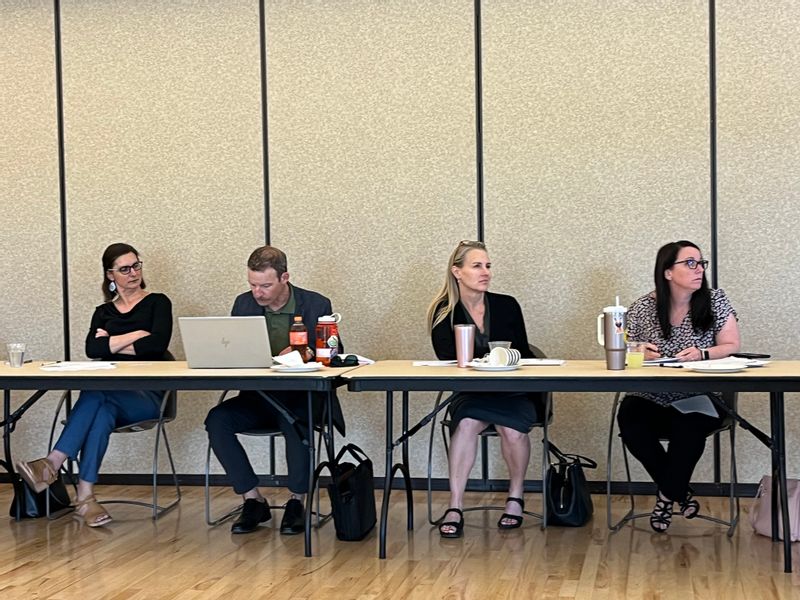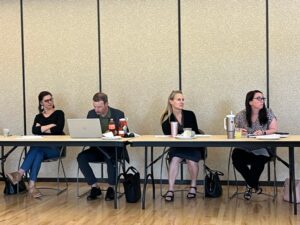Event Recap UNDERSTANDING YOUR ASSESSMENT JUNE 8, 2023 | WHEAT RIDGE

OVERVIEW
On June 8, Downtown Colorado, Inc. (DCI) hosted a lunch session intended to assist anyone engaged in managing tax increment financing resources (most likely an urban renewal authority or URA) presented by Ricker | Cunningham. The program was based on understanding the county assessors’ preliminary and final certifications of value. The discussion focused on the assessors’ three sentence estimate of assessed value, base value, and increment value and asked – how were they calculated? Did they include the right properties in their calculations? Did they capture all new investment in the area(s), and how much increment should be attributed to individual projects within a shared boundary? In addition to this summary, the presentation included key dates that urban renewal authorities should monitor, as well as detailed examples of forms, processes, and protocols that can be used to ensure that tax increment resources are maximized.
PARTICIPANTS
Participant goals for the day focused primarily on how to use the assessor’s report and understand the impacts on specific projects or incentives and reimbursements to developers. There were several elected officials, commissioners, and new staff looking to clarify best practices for using TIF and working with the assessor. The event included participants from Weld, Jefferson, Boulder, and Rio Grande counties. Most participants had multiple TIF Plan Areas within their respective authorities.
COMMUNITY CHALLENGES+ QUESTIONS
- Most Assessors report the increment for an entire URA boundary area. In some cases, this might be conterminous with the municipal boundary. It usually does not take into account the number of TIF areas or the individual properties within each TIF area. However, the URA must determine the amount of TIF that different projects have generated if there are reimbursement agreements with developers.
- Why would you have multiple TIF areas? To be the most judicious with resources to address distinct submarkets and objectives. To draw a tight boundary and generate revenue as development is really going to move forward.
- When we discuss rezoning, there is both zoning and property classification. Non-reassessment factors that impact increment include entitlements, rezoning, horizontal improvements, vertical improvements, parcel absorption rates, and parcel use.
- There doesn’t appear to be a consistent methodology among County assessors for calculating base and increment. The Assessors Resource Library has the same language, but each community should work with the assessor to ensure a common understanding. The “appeals” process is vague but can be used to raise valuation questions.
- Does total valuation include materials and labor? Municipal use tax includes labor and materials. Labor costs may not be included.
- Will the Aurora-Kaiser case standardize any of this? Hopefully, maybe it will include revisions to the ARL.
IMPORTANT COMPONENTS
The session was structured around practices, policies, and protocols for understanding the assessment that urban renewal authorities or downtown development authorities receive from the assessor each year. The following focus areas helped structure the dynamic and interactive discussion
PRACTICES.
- Administrative practices should meet certification and notification requirements, as well as identifying the right team, and establishing education for the whole team.
- Create forms and templates to foster understanding, transparency, and clarity in communicating about TIF.
POLICIES.
- Policies should reflect the vision of the community.
- Increment goes to the Authority, then is distributed to the taxing entities based on their sharing agreements. The Authority can choose to impose a processing fee to cover administrative expenses (usually 1% to 2%).
PROTOCOLS
- Monitor and Track personal property and building and site permits.
- Establish clear understanding with the Assessor about the methodology, process, and dates outlined in the Assessors Resource Library.
TIPS + TRICKS
- Use a market analysis to figure out how to maximize the 25-year potential revenue stream when investment and development is happening. Consider whether a large area with multiple TIFs or smaller areas with single TIFs are best for you.
- Be firm and clear with your Assessor to establish a good understanding of how they work. The Assessors’ Resource Library (ARL) has the same language, but each community should bring finance, urban renewal, and other parties to work with the assessor to ensure a common understanding.
- The “appeals” process is vague but it is wise to plan to submit questions in the spring.
- Monitor all building permits and site permits, etc. and track what needs to be reported to the assessor. Tracking the building and site permits, and comparing to assessed values, allows the URA to allot increment increases by project.
- Site permits from public works are the process to make the assessor aware of horizontal improvements. Assessors may not know what to do or how to include site permits and therefore may overlook horizontal improvements.
- Bring an URA attorney on rather than trying to use a municipal attorney to formalize any agreements around assessment methodology with a Memorandum of Understanding.
- Review the assessors spreadsheet with the community planner to make sure it includes all properties and removes duplication.
ABOUT RICKER | CUNNINGHAM
Ricker | Cunningham is a leading real estate advisory firm, based in Denver, yet servicing clients primarily throughout the Central and Southwestern United States. Anne Ricker, together with her partner Bill Cunningham, established their practice in February 1993 and have been advising urban renewal authorities throughout the State of Colorado for the past three decades.

